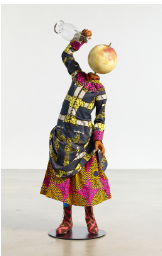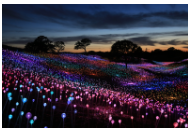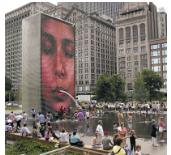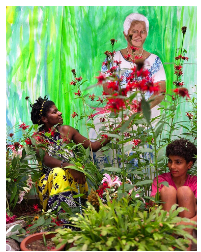This nine-week course provides students the opportunity to explore art through a variety of artmaking processes while focusing on broad concepts/big ideas that make connections between art and life. The standards and objectives are organized into five specific content strands: Creative Process; Critical Thinking and Communication; History, Culture, and Citizenship; Innovation in the Arts; and Technique and Application. Students gain practical experience using a variety of art media, such as drawing, painting, printmaking, ceramics, sculpture, digital design, and mixed-media. Students will examine world cultures through contemporary and historical art. Students develop visual literacy through written, visual, and verbal expression.
Essential Questions: What Are the Big Issues About Art? How and Why Do We Make Art? How Does Art Relate to History and Culture? How Do We Respond to Works of Art?
|
Unit Title and Quarter |
QUARTER 1 |
QUARTER 2 |
QUARTER 3 |
QUARTER 4 |
||
|
Introducing Art |
Messages |
Beauty |
Place |
|||
|
Image Cue |
Maria Magdalena Campos-Pons, Backyard Dreams #5, 2005. |

Yinka Shonibare CBE, Water Kid (Girl), 2020 |

Bruce Munro, Field of Light, 2019. |

MassKara Festival Bacolod, Philippines |
||
|
Focus of the Story |
Our journey begins with discussing visual language in art, and how people are connected through the arts. We use this as a foundation for further analysis of art . |
We continue our journey with an examination of the meaning in art and exploring important issues facing our world today. Students will move into discovering and questioning about art. Making connections to how artists contribute to our society. |
Once we understand the beginning steps, we can examine art and discuss ways that artists find, show and create beauty in the world. Using our world as inspiration for works of art. |
Finally, we can look to examine how art connects with the places in our lives. Students can develop their own artistic voice and reflect on artmaking of their own and others and build connections to community relationships. |
||
|
Transfer Goals |
The Creative Process: Apply creative process through inquiry, questioning, research, investigation, generating ideas and solutions, testing solutions, discussing ideas, refining work as part of a creative community, and reflecting on process and product while developing a personalized portfolio exhibiting original voice and vision as an artist. Critical Thinking & Communication Understands and develops an appreciation that art can have diverse values, meanings, and definitions while recognizing multiple responses and perspectives. Effective at receiving and articulating ideas using appropriate vocabulary and communication when responding to works of art. Able to work independently and collaboratively. History/Culture/Citizenship: Explore and understand historical influences of art through the work of self and others while cultivating an awareness that art is a reflection of time, place and culture. Students identify and interact with art as a community member and citizen, developing a lifelong engagement with art as a supporter, advocate, creator, and informed viewer. Students identify and understand ethical and legal considerations for engaging with art resources and source materials responsibly. Innovation in the Arts: Students understand and explore opportunities to connect visual arts content, processes and skills to career options, college opportunities, and the 21st century workplace. Students explore and connect to careers that are likely to evolve throughout their lifetimes, which requires adaptability and flexible thinking. Students explore the impact of current and emerging technologies on visual arts processes and works and develop problem-solving skills by cultivating connections between fields of knowledge. Techniques & Application: Able to transfer and apply knowledge of artistic skills and techniques when developing ideas for creative expression through a variety of media. |
The Creative Process: Apply creative process through inquiry, questioning, research, investigation, generating ideas and solutions, testing solutions, discussing ideas, refining work as part of a creative community, and reflecting on process and product while developing a personalized portfolio exhibiting original voice and vision as an artist. Critical Thinking & Communication Understands and develops an appreciation that art can have diverse values, meanings, and definitions while recognizing multiple responses and perspectives. Effective at receiving and articulating ideas using appropriate vocabulary and communication when responding to works of art. Able to work independently and collaboratively. History/Culture/Citizenship: Explore and understand historical influences of art through the work of self and others while cultivating an awareness that art is a reflection of time, place and culture. Students identify and interact with art as a community member and citizen, developing a lifelong engagement with art as a supporter, advocate, creator, and informed viewer. Students identify and understand ethical and legal considerations for engaging with art resources and source materials responsibly. Innovation in the Arts: Students understand and explore opportunities to connect visual arts content, processes and skills to career options, college opportunities, and the 21st century workplace. Students explore and connect to careers that are likely to evolve throughout their lifetimes, which requires adaptability and flexible thinking. Students explore the impact of current and emerging technologies on visual arts processes and works and develop problem-solving skills by cultivating connections between fields of knowledge. Techniques & Application: Able to transfer and apply knowledge of artistic skills and techniques when developing ideas for creative expression through a variety of media. |
The Creative Process: Apply creative process through inquiry, questioning, research, investigation, generating ideas and solutions, testing solutions, discussing ideas, refining work as part of a creative community, and reflecting on process and product while developing a personalized portfolio exhibiting original voice and vision as an artist. Critical Thinking & Communication Understands and develops an appreciation that art can have diverse values, meanings, and definitions while recognizing multiple responses and perspectives. Effective at receiving and articulating ideas using appropriate vocabulary and communication when responding to works of art. Able to work independently and collaboratively. History/Culture/Citizenship: Explore and understand historical influences of art through the work of self and others while cultivating an awareness that art is a reflection of time, place and culture. Students identify and interact with art as a community member and citizen, developing a lifelong engagement with art as a supporter, advocate, creator, and informed viewer. Students identify and understand ethical and legal considerations for engaging with art resources and source materials responsibly. Innovation in the Arts: Students understand and explore opportunities to connect visual arts content, processes and skills to career options, college opportunities, and the 21st century workplace. Students explore and connect to careers that are likely to evolve throughout their lifetimes, which requires adaptability and flexible thinking. Students explore the impact of current and emerging technologies on visual arts processes and works and develop problem-solving skills by cultivating connections between fields of knowledge. Techniques & Application Able to transfer and apply knowledge of artistic skills and techniques when developing ideas for creative expression through a variety of media. |
The Creative Process: Apply creative process through inquiry,questioning, research, investigation, generating ideas and solutions, testing solutions, discussing ideas, refining work as part of a creative community, and reflecting on process and product while developing a personalized portfolio exhibiting original voice and vision as an artist. Critical Thinking & Communication Understands and develops an appreciation that art can have diverse values, meanings, and definitions while recognizing multiple responses and perspectives. Effective at receiving and articulating ideas using appropriate vocabulary and communication when responding to works of art. Able to work independently and collaboratively. History/Culture/Citizenship: Explore and understand historical influences of art through the work of self and others while cultivating an awareness that art is a reflection of time, place and culture. Students identify and interact with art as a community member and citizen, developing a lifelong engagement with art as a supporter, advocate, creator, and informed viewer. Students identify and understand ethical and legal considerations for engaging with art resources and source materials responsibly. Innovation in the Arts: Students understand and explore opportunities to connect visual arts content, processes and skills to career options, college opportunities, and the 21st century workplace. Students explore and connect to careers that are likely to evolve throughout their lifetimes, which requires adaptability and flexible thinking. Students explore the impact of current and emerging technologies on visual arts processes and works and develop problem-solving skills by cultivating connections between fields of knowledge. Techniques & Application Able to transfer and apply knowledge of artistic skills and techniques when developing ideas for creative expression through a variety of media. |
||
|
Learning Targets |
As an artist, I can: Use elements of art and principles of design to express meaning in works of art. Apply creative thinking through traditional and contemporary media to communicate personal ideas, experiences, and narratives through works of art. Apply the steps in the creative process to make a work of art. Describe and apply digital citizenship skills related to intellectual property in art research, creation, use of source materials, sharing, and ethical decisions in art making. Compare and contrast various visual arts careers in relation to career preparation. |
As an artist, I can: Analyze, interpret, and evaluate artwork. Examine, formulate, and justify personal responses to art. Develop communication and collaboration skills for a community of artists. Explore a variety of contemporary and digital media tools for following the creative process. Create original artwork using time-based media. Create three-dimensional works of art, using various processes to include clay hand-building techniques. |
As an artist I can: Examine, formulate, and justify personal responses to art. Exercise increasing skill and craftsmanship in the use of media and techniques Apply creative thinking to communicate personal ideas, experiences, and narratives in works of art, using a variety of media Analyze, interpret, and evaluate artwork. Use ideas, concepts, and cross-curricular knowledge to create original works of art. Apply a variety of techniques in observational and expressive drawing. Explore representational and nonrepresentational artwork. |
As an artist, I can: Use a variety of perspective techniques to create the illusion of space in works of art. Create art from a variety of subject matter (ex: portraiture, still life, landscapes, etc). Explore and understand diverse historical and cultural influences of art. Identify venues for experiencing visual arts in the community and the commonwealth. Refine works of art to demonstrate developing technical skill and craftsmanship. |
||

